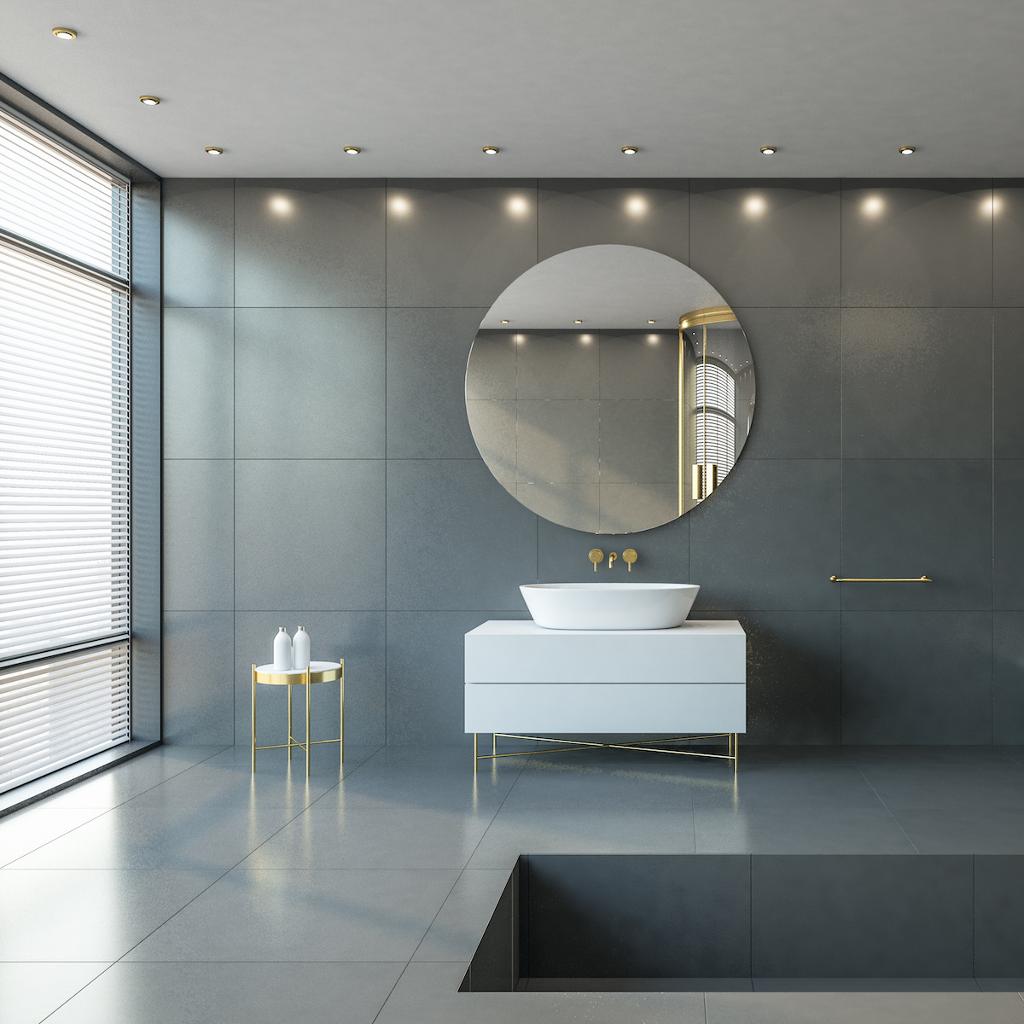
Contemporary 21st Century Bathroom Design
Luxury bathroom design, here in the 21st Century, is unlike that at any other period in the history of interior design. Contemporary concerns are ecological, human centred, future focused and—more than ever before—about function over form. So, what exactly is going on in design today and how do you design a high-end bathroom in the 21st Century style? Let’s find out.
Contents
People focused bathroom design
Ecological bathroom design
The biggest concern facing the planet in the 21st Century is, of course, climate change. Appropriately, luxury bathroom designers are rising to the challenge.
Bathtubs, shower trays, basins and vanity tops are now being crafted in environmentally friendly Corian® and other materials low in volatile organic compounds (VOCs).
Products, like most of those offered by Riluxa, can now be customised to fit the smallest of spaces, such as tiny house bathrooms, as people look to reduce their environmental impact.
What’s more, reliance on natural sustainable bathroom materials like wood, marble and ceramic is increasing as design houses such as Galfia drive awareness of the handmade nature of traditional craftsman techniques in industrial design.
People focused bathroom design
Modern-day bathroom design isn’t just planet focused, though, it’s also people focused.
Our lives are busier. Our Socioeconomic pressures are more pronounced. We’ve experienced the devastation of a global pandemic. In today’s world, installing a luxury bathroom isn’t just about having an opulent, private sanctuary. It now, also, means enabling greater management of our lives through smart design.
Robotics and automation, for example, use connectivity—the Internet of Things—to allow us to set timers on our phones so that we heat the water for only as long as we need it. Domotics (i.e., domestic robotics) have also enabled us to optimise water usage via inventions such as water leak detectors, so that we can be more waste conscious.
In addition to making our lives easier, modern bathroom design also attempts to make them feel better, with a strong focus on our inner sense of wellness. Contemporary bathroom designers want to maximise natural light, bring a little bit of outdoors indoors and find colour schemes that enhance and brighten our moods.
Pursuing a more people-centric agenda stretches to bathroom retailers, too. Riluxa, for instance enables customers to not only buy artisanal quality bathrooms online so they can do so from the comfort and safety of their own homes, but also to order them made-to-measure so they have all the luxury of a bespoke bathroom, but with the simplicity of off-the-shelf.
Eclectic bathroom design
Back in the mid-20th Century, bathroom design was focused on breaking new aesthetic ground by using form to express function—what was known stylistically as minimalism. In the post-postmodern 21st Century, however, designers are less concerned with decorating luxury bathrooms, because they’re driven by bigger issues affecting the planet—and the positive impact that their bathrooms can have.
What this means is that luxury design in the bathroom now draws from multiple periods in history for aesthetic inspiration. From a visual perspective, anything goes—maximalism, Japandi, boho, or even throwbacks to art deco. It’s all part of a free-spirited exchange of ideas that’s as aesthetically playful as it is environmentally sober.
It’s what’s known as the eclectic style and it’s bringing a real sense of timelessness to bathroom design by undermining the idea that certain styles belonged to certain periods.
Decentralised bathroom design
Up to the end of the 20th Century and the dawn of the Internet, advances in interior design could be rooted in specific geographical locations. Art nouveau, for instance, developed in France, while the deceptively titled “international style” initially came out of post-war Netherlands, France and Germany.
Today’s bathrooms, by comparison, are immediately more global in their scope. Because it has no showroom overheads in order to allow luxury for less, an online retailer like Riluxa—for instance—is able to operate internationally in multiple territories, like Italy, Germany, France, UK and Netherlands without ever having a narrative sense of being connected to just one of those places.
Also, the way we are inspired as consumers of bathroom design has become equally decentralised. We no longer look solely to traditional authorities, such as television and glossy magazines, to tell us what is currently considered “good taste”. Taste in bathrooms has been democratised and we’re as likely, now, to put our faith in the authentic opinions of an Instagram influencer or a blogger like The Design Sheppard as we are in those of an established institution like Grand Designs.
The 21st Century poses many challenges—environmental, socioeconomic, wellbeing-related. What contemporary bathroom design does is to attempt to provide some solutions to these challenges so that we can live in a smarter, greener, more self-caring world.